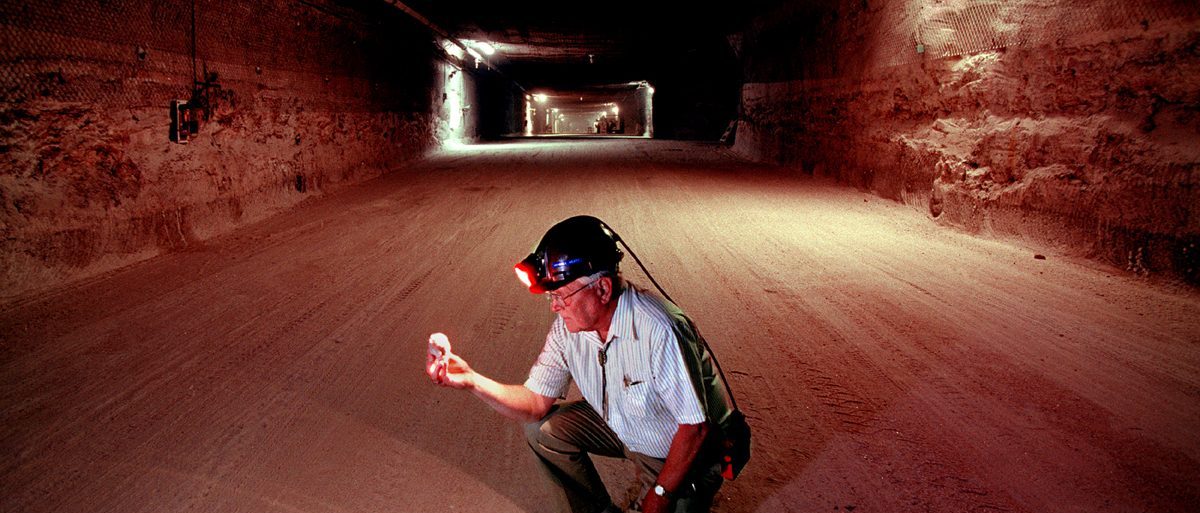
Nuclear Waste Management
Providing scientific information and analyses, as well as programmatic guidance, to both national and international entities, to facilitate resolving nuclear waste management challenges.
Sandia started working in the nuclear waste research area in the early 1970’s and published its first report on nuclear waste in 1973. Sandia has since developed long-lasting, diverse collaborative teams of outstanding scientists and engineers, including geoscientists, material scientists, nuclear engineers, mechanical engineers, computer scientists, and mathematicians. These integrated teams generated the foundational science and engineering data and analyses for developing their recommendations and solutions to the nation’s challenges in spent nuclear fuel storage, transportation, security, and disposal.
Research Focus Areas
Email Updates
Sign up for Nuclear Waste Management updates or access your subscriber preferences.
Resources
Access journal articles, technical reports, presentations, books, and multimedia.
Learn more about our state-of-the-art facilities.
Discover and contact experts through the Earth, Energy, and Environmental Science directory.
Discover and browse success stories through the Lab Partnering Service.
Browse select computational codes, data sets, models, software, tools, and toolkits.
Nuclear Waste Management Video Playlist
Sandia’s supercritical carbon dioxide (sCO2) Brayton Cycle Full Screen
Sandia National Laboratories Nuclear Energy Safeguards, Security, and Safety Full Screen
Sandia’s stress corrosion cracking research and development Full Screen
Understanding loads on spent nuclear fuel rods during transportation and storage Full Screen
Geologic disposal safety assessment Full Screen
Sandia’s nuclear waste knowledge management Full Screen
Sandia’s stress corrosion cracking research and development Full Screen
Sandia nuclear fuel cycle: host rocks and engineered barriers Full Screen
Thermal-hydraulic testing at Sandia Full Screen
Sandia’s Spent Nuclear Fuel Assembly Drop Test Full Screen
Deep Borehole Disposal Research Full Screen
Sandia’s Spent Nuclear Fuel Dual-Purpose Canisters Full Screen
Sandia’s Nuclear Fuel Cycle Technologies Full Screen
Sandia National Laboratories Nuclear Energy Safeguards, Security, and Safety Full Screen
Sandia’s stress corrosion cracking research and development Full Screen
Understanding loads on spent nuclear fuel rods during transportation and storage Full Screen
Geologic disposal safety assessment Full Screen
Sandia’s nuclear waste knowledge management Full Screen
Sandia’s stress corrosion cracking research and development Full Screen
Sandia nuclear fuel cycle: host rocks and engineered barriers Full Screen
Thermal-hydraulic testing at Sandia Full Screen
Sandia’s Spent Nuclear Fuel Assembly Drop Test Full Screen
Deep Borehole Disposal Research Full Screen
Sandia’s Spent Nuclear Fuel Dual-Purpose Canisters Full Screen
Sandia’s Nuclear Fuel Cycle Technologies Full Screen
Sandia’s supercritical carbon dioxide (sCO2) Brayton Cycle
Sandia National Laboratories Nuclear Energy Safeguards, Security, and Safety
Sandia’s stress corrosion cracking research and development
Understanding loads on spent nuclear fuel rods during transportation and storage
Geologic disposal safety assessment
Sandia’s nuclear waste knowledge management
Sandia’s stress corrosion cracking research and development
Sandia nuclear fuel cycle: host rocks and engineered barriers
Thermal-hydraulic testing at Sandia
Sandia’s Spent Nuclear Fuel Assembly Drop Test
Deep Borehole Disposal Research
Work with Us
We partner with large and small businesses, universities, and government agencies. With multiple agreement types to select from, partners can access world-class science, engineering, experts, and infrastructure.
Contact
To contact a member of the Nuclear Energy team at Sandia, please email ne@sandia.gov.